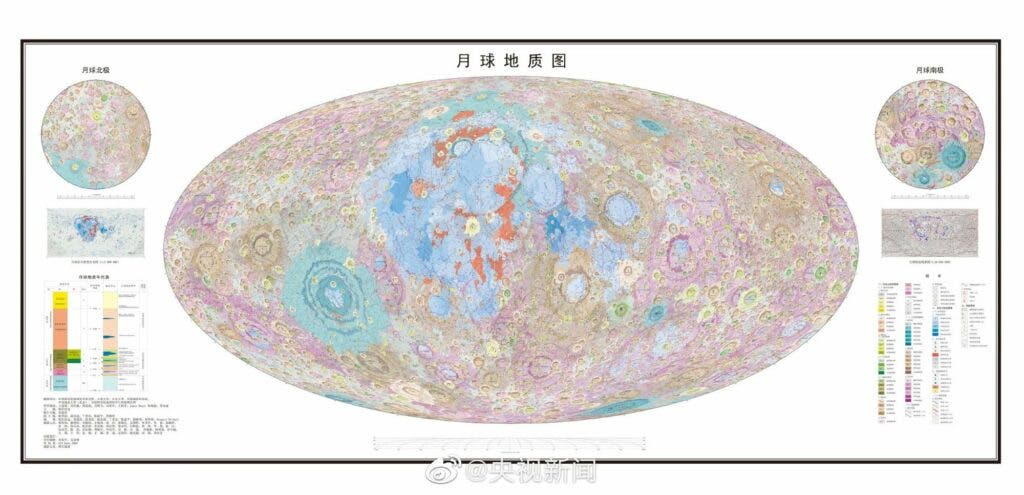For as long as man has looked up at the sky, the moon has been a source of fascination. When the first telescopes were developed, the fascination only grew. Humans finally had a clearer view of the moon, with all its striking and impressive geology. Telescopes got better and so did our understanding of the moon. Then, in 1969, the first humans set foot on the moon — an amazing accomplishment that basically established the US as the winner of the space race.
Most of our recent progress in space came from NASA, the American space agency. But in the past 20 years, China has also sent various mission orbiters, landers, and rovers to the moon, amassing data about the moon and its geology. Now, Chinese researchers have published the bulk of their findings in a large-scale geological map of the moon.

It’s not the first detailed map of the Moon. The previous record, published by the United States Geological Survey (USGS) had a scale of 1:5 million — meaning that one centimeter on the map corresponds to 5 million centimeters in reality. This new map has a scale that’s twice as detailed, at 1:2.5 million.
The map is the brainchild of geologists Ouyang Ziyuan and Liu Jianzhong from the Institute of Geochemistry, Chinese Academy of Sciences in Guiyang. It covers a whopping 12,341 craters, features 17 different types of rocks, as well as 14 types of surface structures.
The geology of the moon is both similar and different from that of the Earth. The moon has neither an atmosphere nor plate tectonics, and lunar geology is especially influenced by impact cratering and volcanism. Without an atmosphere to protect it from meteorites and accelerate erosion, the moon is riddled with impact craters. The lack of plate tectonics makes the moon’s geology much more stable — in contrast, here on Earth, the crust is constantly recycled in the process of plate tectonics. As a result, much of the moon’s surface is still dominated by rocks produced in massive volcanic eruptions that took place between 3 and 3.5 billion years ago; on Earth, you’d have to go to very specific places to be able to find rocks this old that haven’t been recycled yet.
Much of the information for this map came from the Chang’e missions. Chang’e 1 was China’s first deep-space mission, an unmanned lunar-orbiting spacecraft launched in 2007. Two subsequent missions followed. Chang’e 3, the latest mission, includes a robotic lander and China’s first lunar rover.
But the map also includes high-quality datasets from other international exploration programs, showcasing the importance of international collaboration. The map can be accessed here for free (for non-commercial purposes), it has both Chinese and English versions and also will be published in print by the Geological Publishing House.


